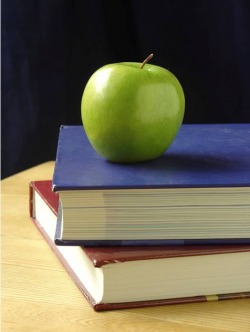Characteristics of Dyslexia

Primary reading/spelling characteristics of dyslexia include:
• Difficulty reading real words in isolation;
• Difficulty accurately decoding nonsense words;
• Slow, inaccurate, or labored oral reading; (lack of reading fluency);
• Difficulty with learning to spell.
The reading/spelling characteristics are the result of difficulty with the following:
• The development of phonological awareness, including segmenting, blending, and manipulating sounds in words;
• Learning the names of letters and their associated sounds;
• Phonological memory (holding information about sounds and words in memory);
• Rapid naming of familiar objects, colors, or letters of the alphabet.
Secondary consequences of dyslexia may include the following:
• Variable difficulty with aspects of reading comprehension;
• Variable difficulty with aspects of written composition;
• A limited amount of time spent in reading activities.
Common Signs of Dyslexia:
The following signs may be associated with dyslexia if they are unexpected for the individual’s age, educational level, or cognitive abilities.
Pre-school:
• May talk later than most children;
• May have difficulty with rhyming;
• May have difficulty pronouncing words (i.e., busgetti for spaghetti, mawn lower for lawn mower);
• May have poor auditory memory for nursery rhymes and chants;
• May be slow to add new vocabulary words;
• May be unable to recall the right word;
• May have trouble learning numbers, days of the week, colors, shapes, and how to spell and write his or her name.
Kindergarten through third grade:
• Fails to understand that words come apart; for example, that snowman can be pulled apart into snow and man and, later on, that the word man can be broken down still further and sounded out as: /m/ /ă/ /n/;
• Has difficulty learning the letter names and their corresponding sounds;
• Has difficulty decoding single words (reading single words in isolation)—lacks a strategy;
• Has difficulty spelling phonetically;
• Reads dysfluently (choppy and labored);
• Relies on context to recognize a word.
Fourth grade through high school:
• Has a history of reading and spelling difficulties;
• Avoids reading aloud;
• Reads most materials slowly; oral reading is labored, not fluent;
• Avoids reading for pleasure;
• May have an inadequate vocabulary;
• Has difficulty spelling; may resort to using less complicated words in writing that are easier to spell.
Source: The Dyslexia Handbook, Developed by the Texas Education Agency, 2007.
• Difficulty reading real words in isolation;
• Difficulty accurately decoding nonsense words;
• Slow, inaccurate, or labored oral reading; (lack of reading fluency);
• Difficulty with learning to spell.
The reading/spelling characteristics are the result of difficulty with the following:
• The development of phonological awareness, including segmenting, blending, and manipulating sounds in words;
• Learning the names of letters and their associated sounds;
• Phonological memory (holding information about sounds and words in memory);
• Rapid naming of familiar objects, colors, or letters of the alphabet.
Secondary consequences of dyslexia may include the following:
• Variable difficulty with aspects of reading comprehension;
• Variable difficulty with aspects of written composition;
• A limited amount of time spent in reading activities.
Common Signs of Dyslexia:
The following signs may be associated with dyslexia if they are unexpected for the individual’s age, educational level, or cognitive abilities.
Pre-school:
• May talk later than most children;
• May have difficulty with rhyming;
• May have difficulty pronouncing words (i.e., busgetti for spaghetti, mawn lower for lawn mower);
• May have poor auditory memory for nursery rhymes and chants;
• May be slow to add new vocabulary words;
• May be unable to recall the right word;
• May have trouble learning numbers, days of the week, colors, shapes, and how to spell and write his or her name.
Kindergarten through third grade:
• Fails to understand that words come apart; for example, that snowman can be pulled apart into snow and man and, later on, that the word man can be broken down still further and sounded out as: /m/ /ă/ /n/;
• Has difficulty learning the letter names and their corresponding sounds;
• Has difficulty decoding single words (reading single words in isolation)—lacks a strategy;
• Has difficulty spelling phonetically;
• Reads dysfluently (choppy and labored);
• Relies on context to recognize a word.
Fourth grade through high school:
• Has a history of reading and spelling difficulties;
• Avoids reading aloud;
• Reads most materials slowly; oral reading is labored, not fluent;
• Avoids reading for pleasure;
• May have an inadequate vocabulary;
• Has difficulty spelling; may resort to using less complicated words in writing that are easier to spell.
Source: The Dyslexia Handbook, Developed by the Texas Education Agency, 2007.

